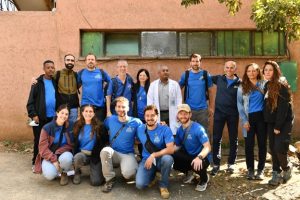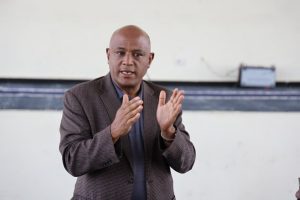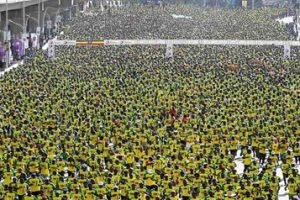Trees are what we see and touch. If this definition were true, whatever we see and touch would be trees. In actual fact, they exist in our minds as much as they do in real life. The question is why is defining a tree that much important.
Conceptually, trees cannot be separated from a forest. Thus, the two concepts are inextricably linked to each other.
The problem of defining a forest was given a separate chapter in a book bearing the title “Planted Forests” written by a number of contributors and edited by J. Evans. Parts of the book can be downloaded from the Internet.
The book was published by FAO and it is possible that it has a significant relationship with agriculture.
Ethiopia is an agrarian country. It is said to have a large number of livestock resources. It has numerous varieties of cereals and pulses some of which are reported to be found in their original form. Farming is carried out on innumerable plots of land by small land holders. Since subsistence farming is the prevailing practice rather than mechanized farming, the country’s total food production is insufficient to feed the entire population at minimum cost.
So, there is a need to adjust land use policy with the desire to meet food requirements. It is possible that land use policy also determines the areas of land that are reserved for forests. There are numerous terms associated with forests. For example, afforestation, reforestation, plantations, etc. call for precise definitions.
The same is also true with their opposites such as deforestation and desertification. Attempts to combat deforestation and desertification have been going on for years; but it is doubtful whether they have produced the required results. Activities of this nature have now acquired international dimensions with the campaign to maintain biodiversity and reduce carbon emissions as understood widely.
Water and forest conservation underscores the importance of regulatory measures. The past three or four months have shown that there was a high supply of rainfall to the extent of not enabling people to determine the onset of the dry season. Luckily, there were not many reports of flooding as was the case in some years in the past. The above statement is a vague generalization unless and until reliable data are available that are consistent with appropriate conclusions and that could increase the sustainability of forest resources or a fairly even supply of crops for human consumption and for the steady running of electricity.
Reaction to the abundance of rainfall in the recently concluded rainy season was unscientific. Some said it was harmful because the farm fields would be inundated and affect the crops. Others predicted that the land would produce more food crops than ever before. The outcome would be measured during the harvest season when the grain silos are full and farmers are rewarded by the fruits of their labour. Anyway, it is better to hope for the best rather than becoming pessimistic.
To go back to the idea of planting forests the major difficulty arising from lack of appropriate definition is classification, as the book mentioned above noted in its preliminary pages. For example, it is not easy to tell the tree from the forest, and the situation could be confusing as many things are in ordinary life. For one thing, the idea that a tree has a life of its own is not palatable to some people.
They feel that they have the right to cut it whenever they feel like doing it just as they wrongly think that if they do not punish their child, the child would grow in the wrong direction. The parallel argument in the case of trees is that it would be deformed if it is not given sufficient attention. It is neither wrong nor right to argue from analogy. However, water is a necessity to sustain the life of a tree just as nutritional issues have to be resolved to ensure whether a child grows in the right direction or not.
The eucalyptus tree is an exotic tree. If there is a big area of eucalyptus tree can it be called a forest? What about a few quantities of the same variety of tree in a large area of indigenous forests? In addition, some trees are planted in a row to the extent that they look like plantations. A single tree could be planted in a plot of land that is reserved for growing cereals. Rural people preserve some gigantic trees for ceremonial or religious purposes. With the drive for modernization and mechanization it is possible that such trees would face extinction. In fact, there is a likelihood that an olive tree could be burned down just because it happens to house a swarm of bees or to cater to the needs of milk suppliers who seek attractive aroma for their product in a rural market.
The definition of trees and forests is made more complex because some trees are man-made while others are natural. A vineyard can easily be described as man-made since it is grown for investment be it by an individual or a company for making profit. On the other hand, a forested land that existed for hundreds of years belongs to the country. The question of proprietorship of forests and trees is bound to come to the fore once in a while and it is a matter of necessity that it should be dealt with the appropriate policy.
There is a likelihood that a single tree could be contentious between two individuals especially when it is a fruit tree giving ripe fruits during a specific season. What the law says with regard to ownership would have to be interpreted in terms of the relevant legal provisions. In the presence of specialists and experts on such matters all the above statements require utmost verification. They could only be considered as an exploratory attempt to tackle a very difficult exercise. Copyright © B. T. Zewolde, October 8, 2019.
The Ethiopian Herald Sunday Edition 27 October 2019
BY BERHANU TIBEBU ZEWOLDE





